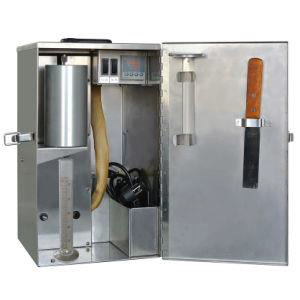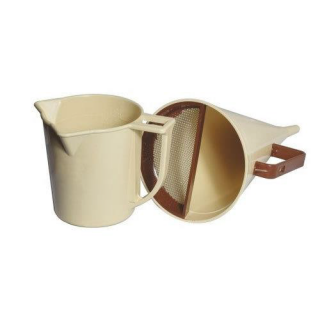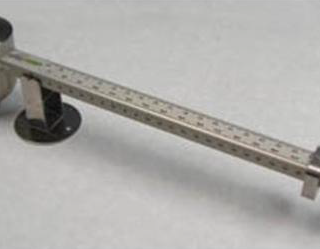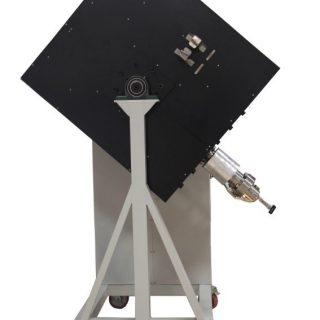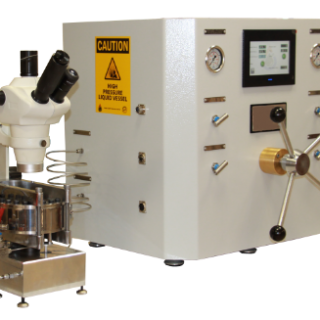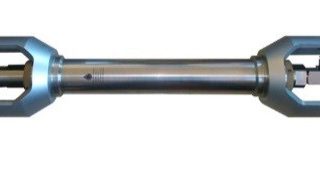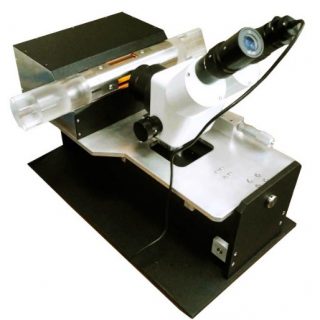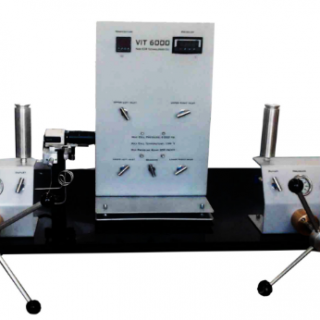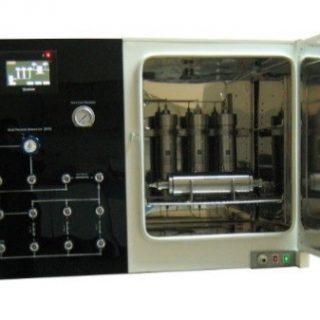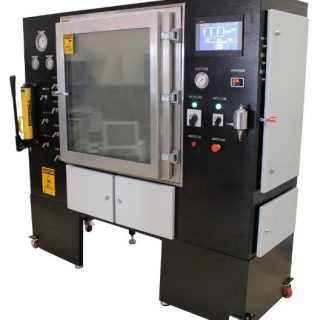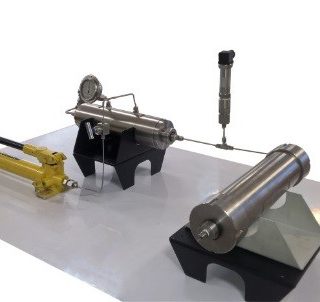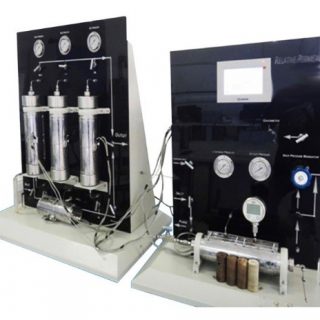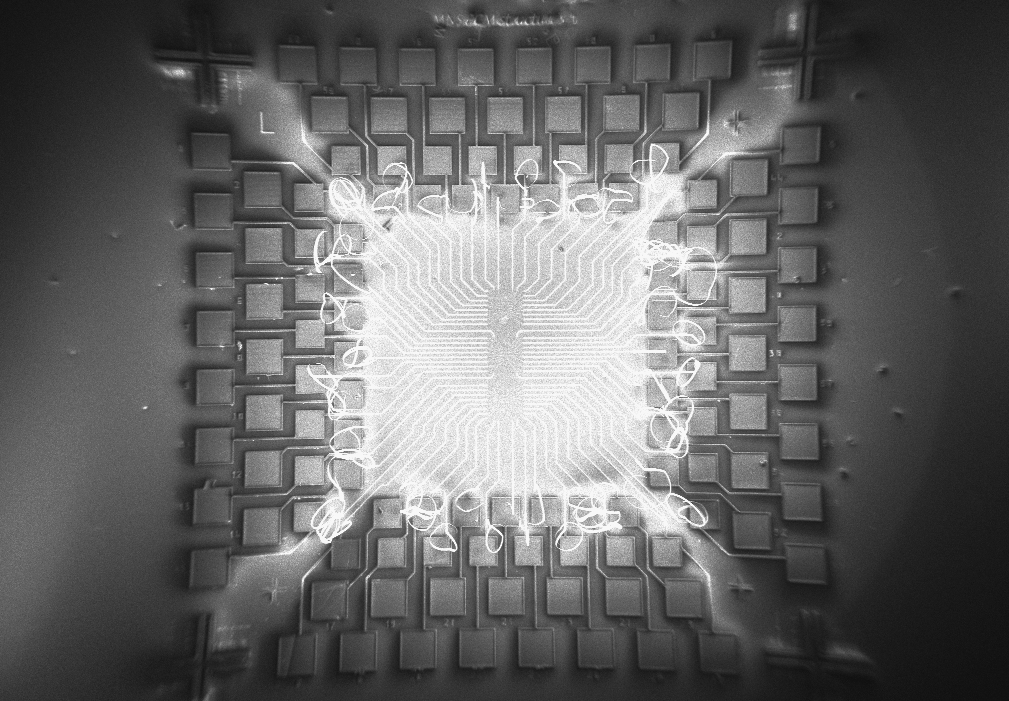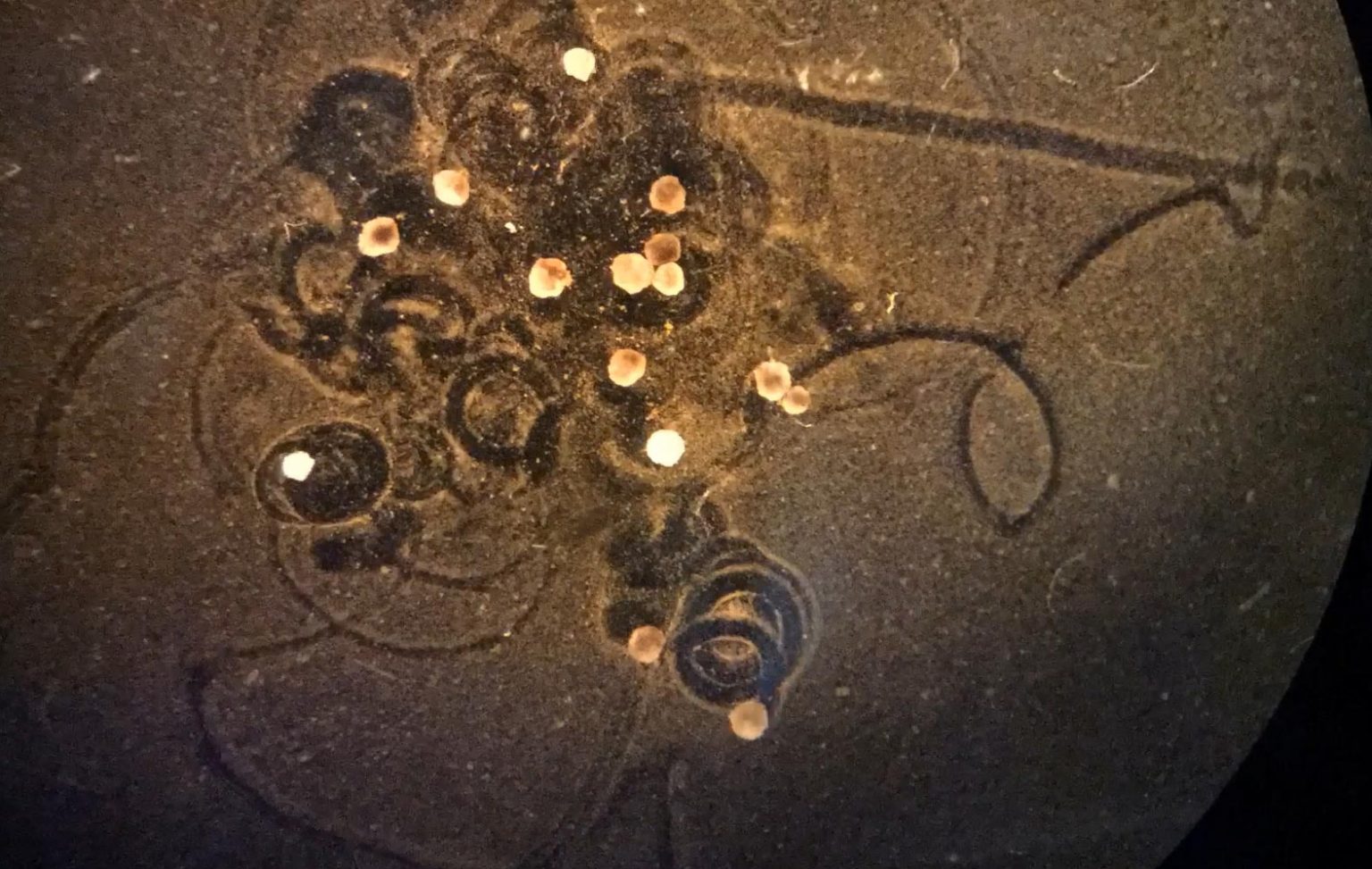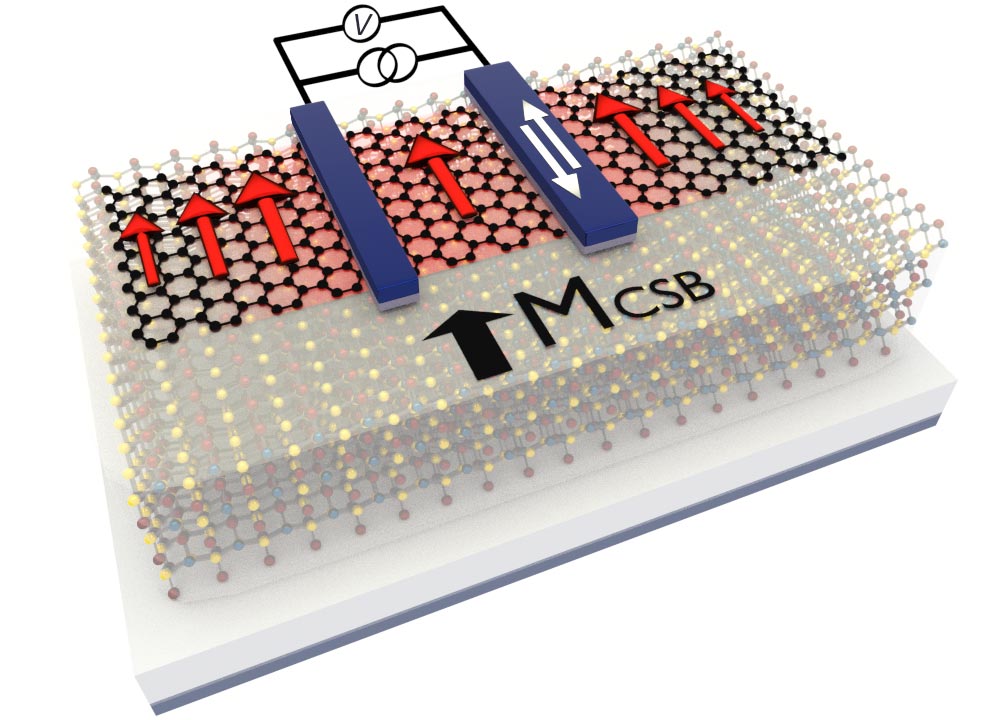Products
- Core Preparation
- Routine Core Analysis
- Special Core Analysis
- Reservoir Stimulation
- EOR
- IFT Measurement
- Fluid Sampling
- PVT
- Pump
- Drilling Laboratory
- Petroleum Laboratory
- Aniline Point Measuring Device
- Cloud Point Measuring Device
- Copper Corrosion Measuring Device
- Distillation Apparatus for Petroleum Fluids
- Ductility of Bituminous Materials Measuring
- Flash Point Measuring Device
- Ostwald’s Viscometer
- Penetration of Bituminous & Lubricating Grease Materials Measuring Device
- Pour Point Measuring Device
- Reid Vapor Pressure Measuring Device
- Saybolt Viscometer
- Smoke Point Measuring Device
- Softening Point of Asphalts & Tar Pitches Measuring Device
- Fluid Laboratory
Archives: Products
Showing 33–48 of 67 results
-
Retort Kit
Read moreThis apparatus simply measures the percentage of oil, water, and solid volume of the drilling fluid. The sample is first heated up to 550°C and the vapor is passed through a condenser. The condensates are collected to measure the oil and water volume of drilling. Knowledge of oil, water, and solid content is fundamental for proper control of mud properties when considering oil/water ratios, rheology, density, filtration, and salinity. Knowledge of solids in drilling fluids is essential for proper evaluation and viscosity control.
Request for quote -
Marsh Funnel
Read moreThe marsh funnel is made of break-resistant plastic and has a fixed orifice with a specified diameter. A fixed mesh near the top across half the cone avoids the orifice from getting blocked by greater particles. The high-impact plastic measuring cup is designed specifically for use with a marsh funnel viscometer and has scales in cubic centimeters and fluid ounces. The marsh funnel viscosity is the ratio of the speed of the sample fluid as it passes through the orifice to the amount of force that is causing the fluid to flow. The marsh funnel viscosity is reported as the number of seconds required for 1000 cm³ of sample fluid to flow out of a full marsh funnel.
Request for quote -
Mud Balance
Read moreMud balance measures the density and specific gravity of drilling fluid and cement slurries. This apparatus is designed based on API-recommended standards. It is portable and can be carried to the rig to perform on-site measurements. It is one of the most sensitive and accurate field instruments available for determining the density or weight-per-unit-volume (specific gravity) of drilling fluids.
Request for quote -
Capillary Tube Viscometer
Read moreThis viscometer is designed to determine the viscosity of the fluid at the reservoir. The fluid viscosity is important in any EOR development plan such as reservoir fluid characterization, oil production optimization, thermal EOR process, Asphaltene onset measurement, and supercritical fluid studies at elevated pressure and temperature. This high-pressure/temperature device includes a digital pressure gauge and temperature.
Request for quote -
Recombination Cell
Read moreThe HP-HT Recombination Cell is designed to make a homogeneous mixture of oil and gas using a mixing system. For this device samples of oil and gas with pre-defined volumes are required. By using a pressurizing system, you can reach your ideal pressure. Moreover, by using heating elements and jackets the required temperature is attained.
Request for quote -
PVT
Read moreThe PVT system is designed to determine the behavioral phase of hydrocarbon fluids at reservoir conditions of pressure and temperature. It can be used to perform PVT tests on black oil, volatile oil, etc. This device uses an embedded high-pressure pump to control the pressure and volume of the reservoir fluid in the cell. A magnetically coupled stirrer mounted inside the sample chamber provides efficient fluid mixing and ensures fast equilibrium of the sample phase.
Request for quote -
Manual PVT
Read moreThe PVT system is designed to determine the behavioral phase of hydrocarbon fluids at reservoir conditions of pressure and temperature. It can be used to perform PVT tests on black oil, volatile oil, etc. Additionally, homogeneous heating is provided by a controlled temperature jacket.
Request for quote -
Asphaltene Detection and Analyzing System
Read moreThis apparatus is designed to accurately determine the different aspects of Asphaltene precipitation at reservoir conditions. The flexibility associated with this equipment makes it more appropriate for conducting comprehensive research in different areas of Asphaltene, such as precipitation detection, Asphaltene size analysis, etc.
Request for quote -
Piston Cylinder Type Shipping Bottle for Oil and Gas Sampling (SS316L)
Read moreThe high-pressure piston-cylinder type transfer vessels are commonly used in the oil and gas industries to transfer the liquid/gas samples into the laboratory for analysis. Additionally, a double-end piston-type cylinder was manufactured for the safe transportation of the reservoir fluid to the laboratory. The transfer vessel utilizes an internal low-friction floating piston to separate the driving fluid from the driven fluid. The cylinders are made of stainless steel 316 L which can also be manufactured using titanium upon the request of the client.
Request for quote -
Spinning Drop IFT Measurement
Read moreThe designed Spinning Drop device (SD-ES10) is able to measure ultralow interfacial tension down to 10-5-5 mN/m. Ultra-low interfacial tension is utilized by special types of chemicals results in high oil recovery through IFT reduction and wettability alteration. These results help operators to develop and optimize emulsions and micro-emulsions.
Request for quote -
HP-HT Pendant Drop IFT Measurement
Read moreThe pendant Drop Interfacial Tension system measures interfacial tension between liquid-gas and liquid-liquid interfaces using the pendant drop method as well as the contact angle between the liquid and solid interfaces at reservoir pressure and temperature of 400 bar and 100°C, respectively. This device utilizes two different manual pumps for the independent discharge of bulk fluid and drops fluid into the visual cell equipped with sapphire sight glasses. The device is also equipped with online image processing software that captures and analyses the images. The visual cell has external heaters placed inside the body of the cell to achieve homogenous heating.
Request for quote -
Pendant Drop Contact Angle and IFT Measurement
Read moreDrop shape analysis (pendant drop method) is a convenient way to measure surface tension. In this method, video images of pendant drops are digitized to determine the interface loci, then measuring the IFT through the solution of the Young-Laplace equation. Wettability of the reservoir rock and interfacial tensions between the reservoir fluids play the most important role in the efficiency of oil recovery.
Request for quote -
Microbial Core Flooding
Read moreThe core flooding system is designed in a very flexible and contemporary way. Therefore, it can be employed in most of the upstream studies with appropriate modifications with special respect to MEOR core flooding experiments. Different types of experiments can be conducted using this device such as conventional fluid injection, soaking experiment for determining the wettability alteration capability of microbes and bacteria, adsorption test, tertiary oil recovery, and other experiments related to the injection of microorganisms into the core plugs.
Request for quote -
General Core Flooding
Read moreThe CF evaluates and optimizes oil recovery, based on different injection protocols and fluid, such as miscible and immiscible gas injection, surfactant injection, polymer injection and etc. This device tolerates a maximum pressure and temperature of 400 bar and 100 °C respectively, under unsteady state conditions at confining pressures up to 400 bar. One of the transfer vessels is a miniature type that can be used for rinsing the lines by filling them with toluene or other solvents. (E20: in addition, this miniature transfer vessel can be used for chemical or microbial flooding which the injected slug is small).
Request for quote -
Benchtop Core Flooding
Read moreThe BCF-E10 evaluates and optimizes oil recovery, based on different injection protocols and fluid such as surfactant injection, polymer injection, etc… This device tolerates a maximum pressure of 400 bar for liquids under unsteady state conditions, at confining pressures of up to 400 bar. This device comprises one transfer vessel and a core holder, capable of different injection scenarios. In addition, the transfer vessel can be used for chemical or microbial flooding.
Request for quote -
Liquid-Liquid Unsteady State Relative Permeameter
Read moreUPR is designed in a way that it is able to perform different injection protocols to measure the relative permeability by different analysis methods including Johnson-Bossler-Naumann (JBN), modified JBN, Toth, et al and the Jones-Roszelle methods. The unsteady-state method is particularly suited for measuring endpoint values of the non-wetting phase. The URP-ES20-ES30 system provides a versatile facility to carry out unsteady-state relative permeability studies for liquid/liquid at reservoir temperature and pressure.
Request for quote
Best offers
Customizing Orders Based On Customer Needs
Initial Setup & Installation
24x7 Support
Product Warranty & Guarantee
CIF Delivery
Know Us

The company provides new services based on state-of-art technologies, breaking into new markets, and eventually, stabilizing as a knowledge-based industrial group.
Read More
